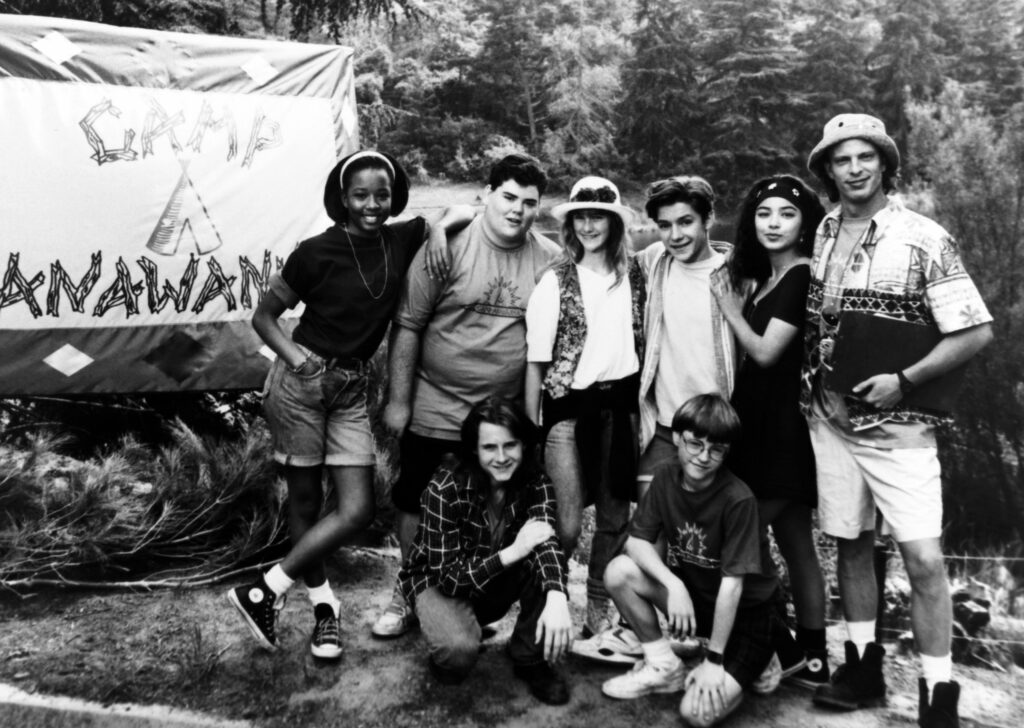Canada has roughly a thousand overnight summer camps, many of them costing up to $1,800 a week. For those whose parents can afford it, this time away from home is a chance for a young person to gain self-confidence, environmental awareness, and emotional intelligence. Such opportunities have been less accessible to lower-income families, of course, and as fees continue to increase, even fewer people may get to know what that seasonal buzz is all about.
Rika Ruebsaat — a singer, teacher, and folklorist from Princeton, British Columbia — attended an Anglican camp in the West Kootenays in the late 1950s and early ’60s. A few years ago, she decided to record some summertime adventures like her own for posterity. “In order to capture the effects of summer camp,” she writes, “I knew that I needed to talk to people about their experiences.” So Ruebsaat tracked down fifty or so former campers, who spoke about their (mostly) fond memories. Loosely organized in thematic sections, the exhaustively edited vignettes in My Paddle’s Keen and Bright conjure details of dining hall songs, pranks, and fireside tales that are familiar to so many intrepid veterans, whether they roasted marshmallows in the ’40s at a Communist camp or in the early 2000s at a Christian one. Most of the people Ruebsaat interviewed are from British Columbia or Ontario, and they are all white. “Their perspectives,” she writes, “are thus those of Canadian settler society.” Still, she hopes that her collection will appeal to a broader audience.
The emergence of summer camps in Canada “coincided with a time of massive industrial growth and urbanization.” As cities spread around the turn of the twentieth century, so too did a general anxiety that religious and community values would disappear. Late Victorian-era British organizations, such as the Young Men’s Christian Association and the Boy Scouts with “its potent combination of militarism, Christianity and engagement with the natural world,” offered a reassuring counterweight. The irony, Ruebsaat points out, is that the money that made these groups possible was “generated by the very industrialization and concomitant urbanization that spawned a longing for nature.”
My Paddle’s Keen and Bright does not shy away from some of the deeply problematic issues surrounding the classic camp format. We read of dream catchers, totem poles made from paper towel tubes, and red‑face pageantry — reflective of the once popular “noble savage” archetype, epitomized by the works of James Fenimore Cooper and the figure of Grey Owl. In the ’70s, children at Camp Latona, on British Columbia’s Gambier Island, dressed up in costume for “Indian” campfire nights. Each cabin — or “tribe”— would then place an object into the flames as an offering to Gitche Manitou. Latona “actually had some First Nations children,” Ruebsaat explains, and their attendance was “likely subsidized by the church.” The camper (and later camp director) who shared this particular memory with the author “had the impression at the time that it was a highlight for the First Nations kids to be honoured by having these ‘Indian’ campfires.” Ruebsaat suggests that “it would be interesting to get their side of the story,” but she doesn’t actually include it.

On those memorably rough-and-tumble days of summer camp.
Nickelodeon; Everett Collection; Alamy
While most of Ruebsaat’s interviewees express contrition for their participation in practices that would now be deemed politically incorrect, one man, who grew up in a working-class East Vancouver home, wonders “if that early exposure at camp put an interest in me and is why I’m still active in First Nations issues to this day.” Other comments betray a barely contained disdain for contemporary attitudes. Some mourn the passing of rituals such as the tribal campfire, and others question the influx of safety regulations and protective gear like life jackets and helmets. “We had none of that,” a former Girl Guide leader remembers of the ’50s.
Many of the accounts in My Paddle’s Keen and Bright are cut from a similar cloth; they romanticize the freedom of life in the woods, ghost stories by flashlight, crushes on older counsellors, and so on. Some are downright hilarious: one woman recalls how her braces became entangled with those of a handsome co‑ed back in the ’40s, in the Adirondacks of New York. But other recollections illuminate pathos more than happiness. One camper, who attended an evangelical Christian camp about twenty years ago, despite not being raised in a religious home, describes the humiliation she felt and the mockery she endured after she failed a test of faith. Another, who went to a horse camp southeast of Vancouver in the ’90s, encountered a different type of challenge: “I had trouble making friends, so I made good friends with the pig.” (The “massive” fellow ended up trying to hump his back.) And in a particularly affecting story, an older woman recalls her twelve-year-old self starring in a musical that her Quebec camp put on for the parents. Hers never turned up.
The rough-and-tumble days of yesteryear left their marks on these people who flew the nest for the first time and sought belonging somewhere else: lasting memories, lifelong friendships, and, in some cases, actual scars. Lacking in facts and figures, My Paddle’s Keen and Bright is far from a scholarly monograph, but it vividly renders the increasingly rarefied world of summer camp. For the initiated, it would be a perfect addition to the cottage bookshelf — perhaps one fashioned out of the ribs of an old canoe.
Michael Strizic is a devoted Deadhead and former managing editor of the magazine.

